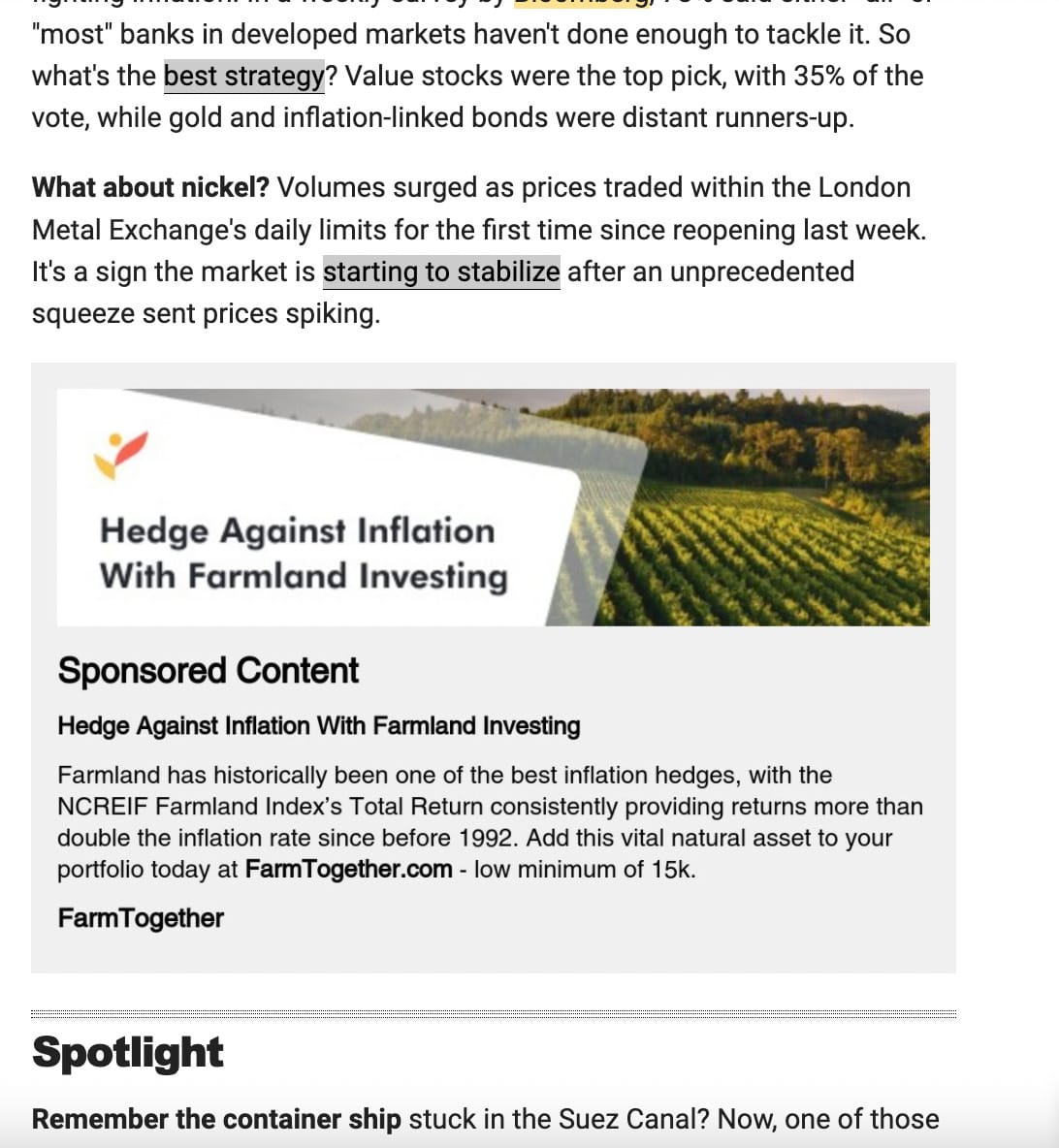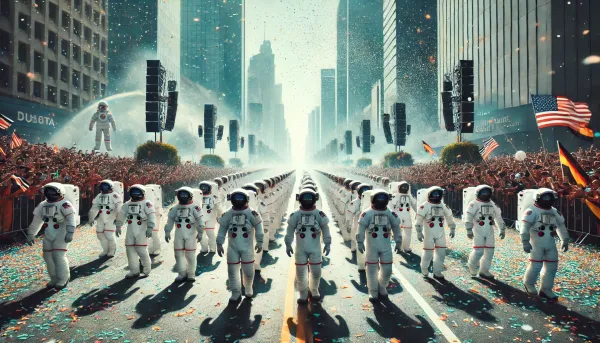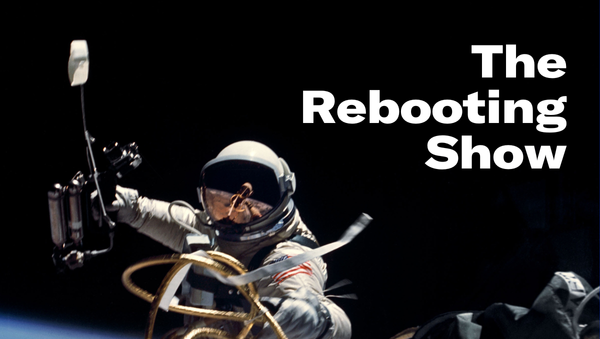The rebirth of native advertising
Primary-engagement media can monetize differently
I distinctly remember being at an ad industry event in the mid-2000s when an analyst on stage bemoaned “the crappy 386 x 60 banner.” This was the original workhorse format of internet advertising that was nearly universally unloved. An agitated ad network CEO leapt to the defense of what the IAB’s then-CEO would regularly call “the much-maligned banner,” with the unintentionally hilarious riposte: “This industry was build on those crappy ads!”
Too true. But the shortcomings of banner ads were clear from the beginning. They weren’t anything like the magazine-style ads they were meant to mimic. For all the talk about how people got Vogue as much for the ads as the editorial, nobody went to Yahoo for Vonage or spy-cam pop-ups, much less those atrocious Eyeblaster ads that lived up to their name. The first home-run ad format on the internet didn’t appear until paid search ads were pioneered by Overture and then perfected by Google in the early 2000s. Search advertising was the first truly native advertising on the internet, possibly with the exception of email spam.
Native advertising in the early 2010s – does this decade have a name? – was developed as a way to change that dynamic. BuzzFeed was the earliest and loudest proponent of this approach, offering the promise of publishers using their content expertise to create ads that are more valuable to both sponsors and the audience. But native advertising mostly fizzled, serving for most publishers as a lower-margin option compared to, yes, banner ads. BuzzFeed even sensibly threw in the towel on going all native with its adoption of programmatic display in 2017.
Native advertising is poised for a comeback. In the bifurcation of digital publishing, big publishers with a fair amount of first-party data will benefit from the difficult and overdue transition underway in ad targeting. Scaled media will compete on this level. The more fertile part of the market, in my view, will be in primary-engagement media that is not tied to pageviews but is premised on direct connections with discrete audiences. This category of “farm-to-table” media is smaller but sturdier, not dependent on the fly-by traffic from search and social that most big publishers have built their businesses on.
The dynamics of primary-engagement publishing monetization are also different. Primary-engagement advertising is expensive. Advertising to real people with real ties to the publisher should be more expensive. The spreadsheet-driven approach of the mechanized ad industrial complex won’t work in this world. Big publishers have built their operations to satisfy the spreadsheet. They are expert at mixing plenty of chaff with the wheat and pretending it’s all wheat. It reminds me of how the editorial side shifted to write for algorithms. So too did the sales side shift from solving client business challenges to gaming the mechanics of the spreadsheet. All part of the hustle.
Primary-engagement advertising is often tied to a person, giving it added heft as more akin to an endorsement. You can see the high end of primary-engagement advertising at work most clearly with what Packy McCormick is doing at Not Boring. I’ve been long on Packy for a while because he’s pioneering a high-value media model that is unlike what’s come before. Pack’s sponsored deep dives might be the most valuable ad product on the market right now, the primary-engagement advertising equivalent of the famed mesothelioma keyword.
That might be a bit much, but the truth is Not Boring’s sponsored deep dives, which Packy writes the same way he does other posts, provide the kind of value that is simply not seen in pageview media. His recent 16,000-word deep dive into the Flow blockchain was cited by prominent VC Fred Wilson. Not much sponsor content delivers like that.
But it doesn’t scale, I’m always told. Crazy idea: Maybe it doesn’t need to scale. There are lots of high quality, expensive products in the world that aren’t scaled. Maybe there’s room for a group of publishers who choose not to sacrifice quality for quantity. Big market, lots of room for many approaches. This high touch, high value approach doesn’t need to scale because it is creating so much value.
Compare Packy’s approach to the mechanized “sponsor content” that shows up in Bloomberg’s email.

Not terrible, but also closer to a Facebook ad than being a true integration. To be fair, that is an improvement on the LiveIntent programmatic ads that infiltrate most big publisher newsletters. It’s telling that these publishers, with deep client relationships, content studios, native ad servers, strategists, can’t seem to offer a product in the same league as a guy who descends to his basement to read aloud 66,000-word sponsored deep dives.
There’s a signal there. Primary-engagement advertising will mimic the editorial rhythms of primary-engagement publishing: less frequent, higher impact, more in-depth and more personal. Packy is transparent in his approach, even telling his audience how he’s paid. Frequently, since the core of his model is an investment fund, he also has a stake in the company. The sponsored deep dives making the Not Boring fund’s money more valuable than other funds. This is blurring the lines between a promotion and an endorsement – and it’s spreading. The problem with the original native advertising was it was really promotions impersonating endorsements.
This approach gives many journalists the willies. My own version of this is what I call Spotlight episodes of The Rebooting Show, where I have an underwriting sponsor as guests. I’ve gotten negative feedback on these exclusively from journalists and one Reply Guy on Twitter. I think Spotlights are a good product because I approach them the same way as I do any podcast. For example, the Spotlight I did with Audigent’s Jake Abraham performed in line with all podcasts. The rub of this approach is it’s not a good fit for many sponsors, either because they want more control over the message or they don’t have a product that fits with the editorial mission. I’d be remiss if I didn’t include a link here to get in touch in case you want to partner.
That’s an unusual position for publishers. Most chase after any possible revenue in the market. Saying no is rarely if ever done, particularly if it’s nearing the end of the quarter. That dynamic needs to change in primary-engagement publishing. The connection to an audience through a list incentivizes the publisher to avoid the adversarial nature of pageview publishing. That means changing the relationship between publishers and sponsors. The ad business is far more transactional in pageview publishing where actual partnerships work best in primary engagement media.
Job alert: Creative Art Director at Milk Street
Every now and again, I’m going to post interesting roles at publishers building sustainable media businesses. If you have one you’d like to publicize, get in touch.
Milk Street is a great example of primary-engagement publishing. The recipe category is a visual mess, filled with poorly designed pages that serve mostly as a vehicle for autoplay video ads. Milk Street is different. Christopher Kimball has created a premium experience that leans on great design and photography. Milk Street is looking for a creative art director in order to lead its art department. Check out the details for the role.
Pivot to the middle
My working theory is that we’re about to see a return to the middle across many facets of society. Our political tribalism has reached a point where the only options are dissolution and civil war or compromise. Maybe I’m hopelessly naive, but I’m betting on the latter. Talk about a sign of the times that Compact, a new journal that is trying an approach that doesn’t neatly fit in the orthodoxies of the right or left, is describing this approach as “radical.” My guess is we see more efforts like this that reject the artificial extremes that get far too much attention when the majority people are sane and reside somewhere in the middle.
Crypto realities
Speaking of the middle, the crypto story is inevitably going to end there. Shockingly it turns out that crypto and NFTs do not magically create a utopia for artists and musicians while eliminating all traces of intermediation. I’m not sure this was promised. To me, the NFT projects are simply ways to create more value for what was formerly in the merch bucket. So, cross off utopia, but a more realistic question is whether all this activity can tilt the balance of power more in favor of the artists.
Thanks for reading. If you have a chance, please send The Rebooting to a friend or colleague who would find it valuable. Also, please hit reply and let me know your thoughts on this week’s topic.




